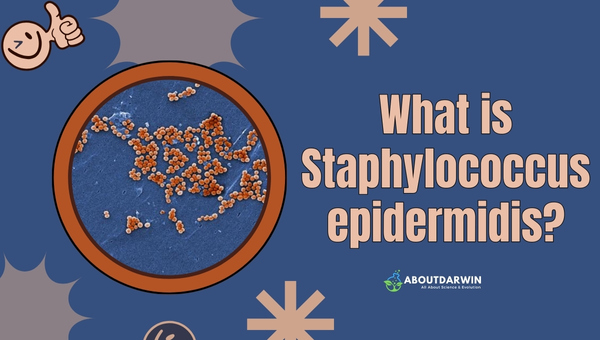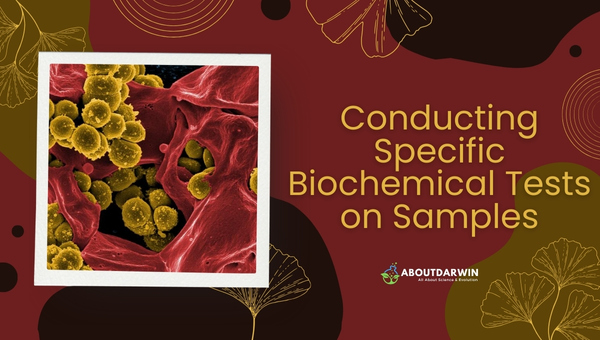Physical Address
304 North Cardinal St.
Dorchester Center, MA 02124
As I dive deeper into the fascinating world of microbiology, I am amazed by the vast array of bacterial species that coexist in our bodies. Some play important roles in maintaining our health, while others can cause harm if they get out of balance. Today, I’m focusing on Staphylococcus epidermidis — an intriguing bacterium that lives on human skin.
You may have heard about Staphylococcus aureus, a common bacteria related to serious infections. However, its relative – Staphylococcus epidermidis – is less notorious but is no less interesting.
Despite its benign nature, most of the time, under certain conditions, this bacterium can pose challenges, too. That’s what makes biochemical tests and correct identification crucial for maintaining our well-being.
| Basic Characteristics | Properties (Staphylococcus epidermidis) |
|---|---|
| Oxidase | Negative (-ve) |
| Shape | Cocci |
| Gas | Positive (+ve) |
| Gelatin Hydrolysis | Negative (-ve) |
| MR (Methyl Red) | Negative (-ve) |
| H2S | Positive (+ve) |
| Catalase | Positive (+ve) |
| VP (Voges Proskauer) | Positive (+ve) |
| Hemolysis | Negative (-ve) |
| Motility | Negative (-ve) |
| Citrate | Negative (-ve) |
| Coagulase | Negative (-ve) |
| Capsule | Mostly Capsulated |
| Gram Staining | Positive (+ve) |
| Nitrate Reduction | Positive (+ve) |
| Pigment | Negative (-ve) |
| Urease | Positive (+ve) |
| HLA Protease | Negative (-ve) |
| Fermentation of Arabinose | Negative |
Contents
As a science enthusiast, I was always drawn to the fascinating world of microorganisms. Let’s talk about one bacterium that lives right on our skin: Staphylococcus epidermidis. It’s a tiny bacterium, invisible to the naked eye, but it plays a considerable role in our lives.

Belonging to the genus Staphylococcus, it is typically found living harmoniously on human skin and in mucous membranes – without causing any issues most of the time. The bacterium is spherical (cocci), often found in clusters, hence taking its name from the Greek words staple and kokkos, translating to “a bunch of grapes.”
However, as benign as it may seem, if given an opportunity like access through surgical wounds or catheters into your body, then Staphylococcus epidermidis can cause serious infections.
Worse still for immunocompromised individuals where even a condition on the surface could lead to severe diseases. Therefore, it becomes crucial that we identify and understand this bacterium well.
Understanding the basic characteristics of Staphylococcus epidermidis is key to knowing how it behaves and affects our health. So, let’s dive deep into this remarkable bacterium.
Its appearance under a microscope is fascinating: they are arranged in ‘grape-like’ clusters and have a thick, protective cell wall made of peptidoglycan with teichoic acid. They’re non-motile and typically are non-hemolytic on blood agar plates.
Despite being part of our normal skin flora, Staphylococcus epidermidis can become opportunistic in certain circumstances, such as when one is hospitalized or has a weak immune system.
It can cause mastitis in breastfeeding women or infections related to implanted medical devices like catheters or prosthetics due to its ability to form biofilms that enhance their survival on these surfaces.
Biochemical tests serve as critical tools for quick and definitive identification of Staphylococcus epidermidis. They typically involve:
Each one of these tests provides vital clues that allow us to confirm or rule out the presence of this opportunist pathogen hiding amidst other harmless skin flora.
Sure, here are the steps typically involved in the identification of Staphylococcus epidermidis:
Each of these steps provides puzzle pieces that add up to help us identify whether we’ve found Staphylococcus epidermidis or not. Cautious sample handling, proper execution of these tests, and accurate interpretation remain crucial in this process.
Let’s now dive into how we actually conduct these biochemical tests to identify Staphylococcus epidermidis. Now, remember, every organism has a unique metabolic fingerprint. Just like we have distinct fingerprints, each species of bacteria metabolizes specific substances differently, providing us clues for their identification.

The first test that commonly comes to mind is the coagulase test. It’s quite simple, really – if the bacteria produce coagulase enzymes that clot blood plasma, then it forms a protective wall around itself, making our defenses ineffective and thus showing up in the test.
Want to know another fascinating yet simple biochemical test? Well, let me tell you about the catalase test. Just add hydrogen peroxide to a sample, and if your bacteria are producing catalase, then you’ll see bubbles forming because of oxygen released by breaking down hydrogen peroxide.
Then there’s the oxidase test, which is based on whether your bacterium produces cytochrome c oxidases or not. If it does, then adding chemicals will result in color change, proving its presence!
Finally, we have multiple sugar fermentation tests that provide us with crucial information by indicating what type of sugars your bacteria can ferment. Being mindful and observant during these testing processes ensures accurate results when identifying Staphylococcus epidermidis.
No, they are not the same. While both belong to the Staphylococcus genus, they are different species with different characteristics and pathogenic potentials. Staphylococcus epidermidis is usually harmless but can cause infections under certain conditions, while Staphylococcus aureus is more virulent and a common cause of skin infections.
Biochemical testing is an effective method for identifying many types of bacteria based on their enzymatic activity and metabolic processes. However, it may not be sufficient in some complex cases where genetic testing or other advanced techniques might be needed.
When collecting samples for bacterial identification, ensure that the samples do not get contaminated by other organisms or substances. Proper sterilization methods should be employed before sample collection.
Not generally! Biochemical tests themselves don’t pose much risk as they’re usually conducted in controlled lab environments on collected samples. However, improper handling can lead to incorrect results or increased risk of infection.
Early detection matters because it could prevent potential infections, particularly in hospital settings where people have surgical wounds or catheters – providing access into their bodies for these opportunistic bacteria.
In wrapping up, I’ve highlighted the extraordinary world of Staphylococcus epidermidis—a bacterium that lives on our skin—along with the importance of biochemical testing in identifying it. The beauty of science truly manifests itself in such microbial discoveries and tests developed to monitor their activity.
Early detection not only determines preventive measures but also contributes to averting severe consequences. In medical technology’s ever-evolving landscape, it continues to innovate and improve our ability to identify bacteria like Staphylococcus epidermidis.
As we journey forward, the advancements will pave the way for a safer future for us – perhaps even turning these minuscule creatures from being potential threats into useful allies.